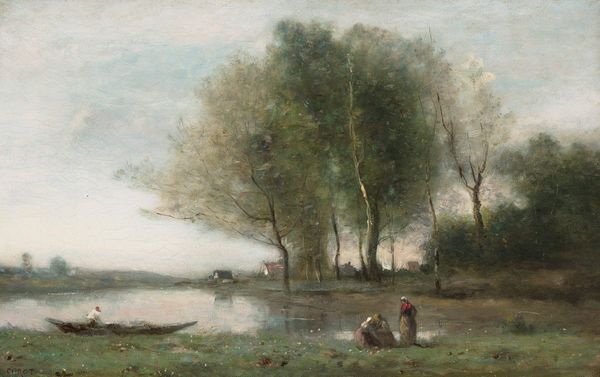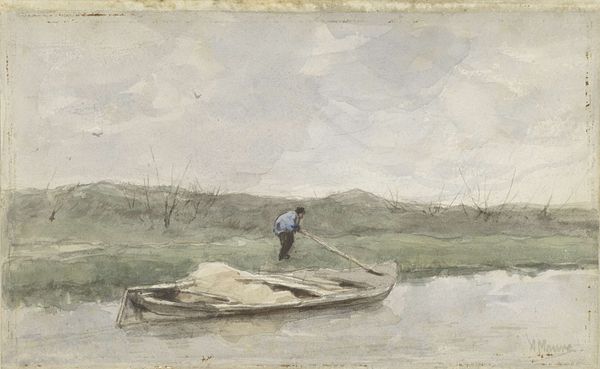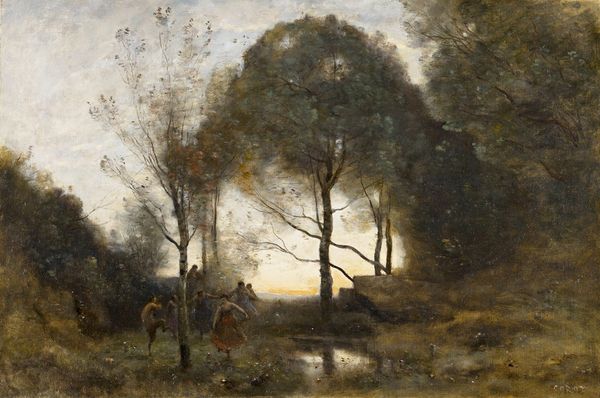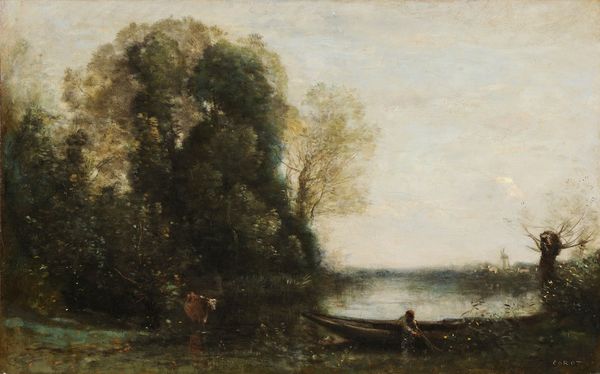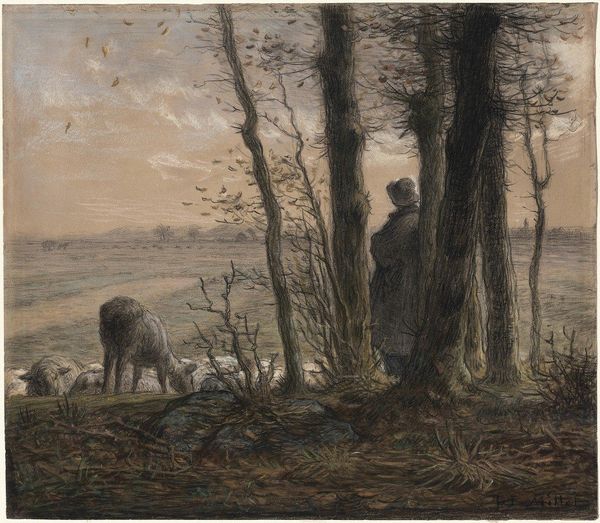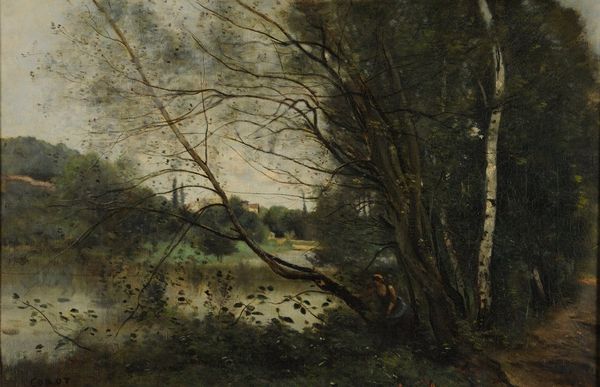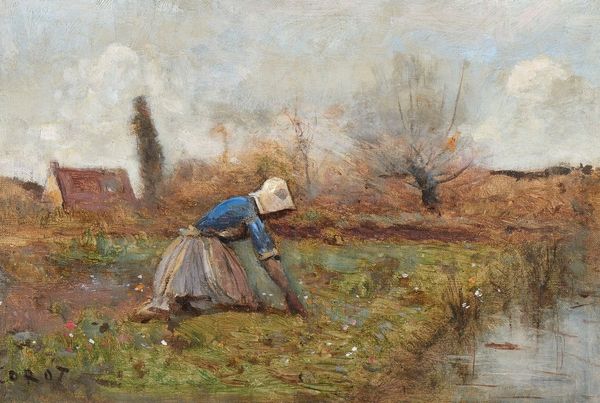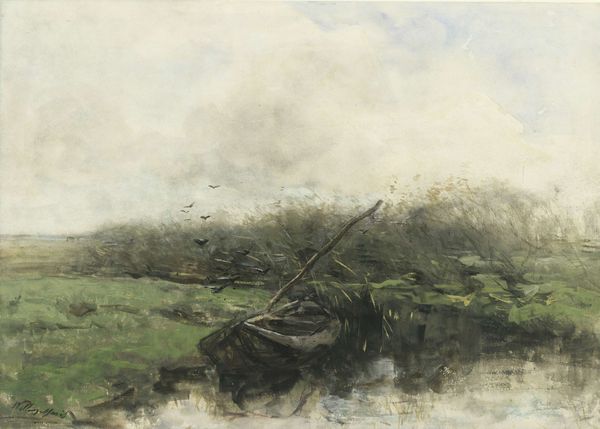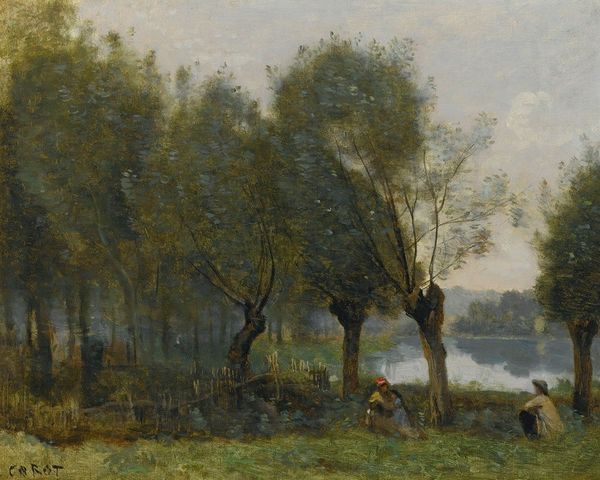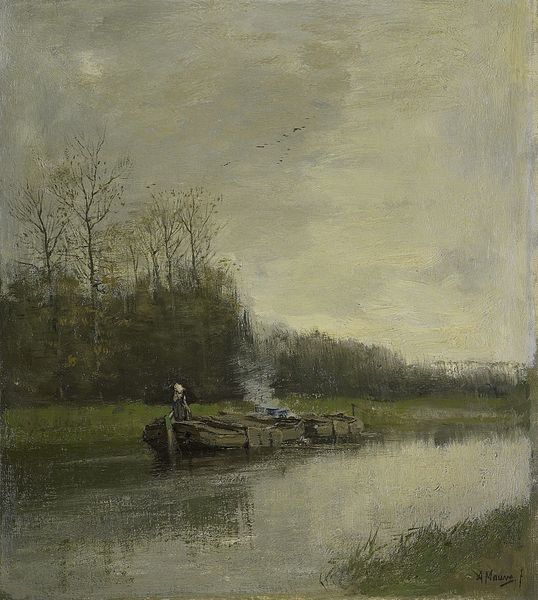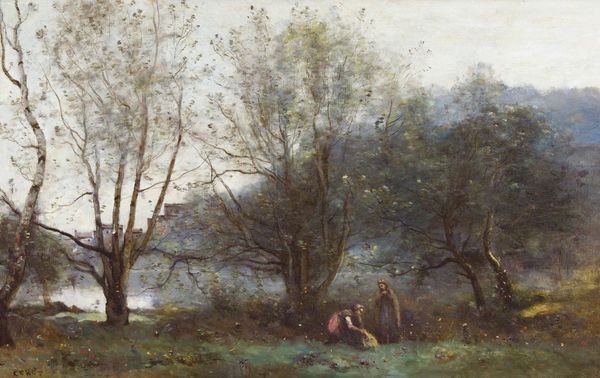
oil-paint
#
dutch-golden-age
#
oil-paint
#
landscape
#
oil painting
#
genre-painting
#
realism
Copyright: Public Domain: Artvee
Jozef Israëls likely painted *The Sand Bargeman* using traditional oil paints, a medium favored for its ability to capture light and texture. The rough handling of the material is apparent in the thick brushstrokes. Israëls wasn’t interested in idealizing his subject. The painting depicts a worker in a mundane, everyday activity. The material handling, the physical labor, the weight of the boat filled with sand: these all speak to the lived experiences of the working class. The artist’s own labor in applying paint to canvas becomes analogous to the bargeman's toil. The somber color palette and loose brushwork create a sense of grit and authenticity, emphasizing the reality of working-class life. In this way, Israëls elevates the ordinary, prompting us to consider the social and economic contexts that shape human existence. The artist's focus allows us to appreciate the intrinsic value and dignity of labor, as represented through the manipulation of paint.
Comments
rijksmuseum about 2 years ago
⋮
In 1871 Jozef Israëls moved into a modern villa on the Koninginnegracht in The Hague. From his sitting room, he could see the fishermen, sand bargemen and seaside visitors travelling by canal to and from Scheveningen. Here the sand bargeman is transport-ing sand from the levelled dunes to the new districts of The Hague. But he also personifies the difficult journey of human life. This is the central theme of Israëls’ work.
Join the conversation
Join millions of artists and users on Artera today and experience the ultimate creative platform.
